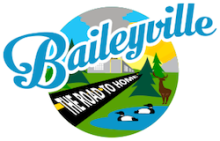Verizon Will Cut Off Rural Subscribers In Thirteen States
A recent proposal being considered by the FCC that has raised the loudest outcry has been the status of mobile broadband in rural areas. Now that Verizon is discontinuing rural subscriber accounts, the FCC will be able to see those concerns come to life.
Dear John...
The company has decided to cut service to scores of customers in 13 states because those subscribers have used so many roaming charges, Verizon says it isn’t profitable for the company. Service will end for affected subscribers after October 17th.
Verizon claims customers who use data while roaming via other providers’ networks create roaming costs that are higher than what the customers pay for services. In rural communities, often mobile wireless is the best (albeit poor) or only option for Internet access, so subscribers use their phones to go online.
Subscribers are from rural areas in Alaska, Idaho, Indiana, Iowa, Kentucky, Maine, Michigan, Missouri, Montana, North Carolina, Oklahoma, Utah, and Wisconsin.
In a letter sent to customers scheduled to be cut off, Verizon offered no option, such as paying more for more data or switching to a higher cost plan. Many of the people affected were enrolled in unlimited data plans:
“During a recent review of customer accounts, we discovered you are using a significant amount of data while roaming off the Verizon Wireless network. While we appreciate you choosing Verizon, after October 17th, 2017, we will no longer offer service for the numbers listed above since your primary place of use is outside the Verizon service area.”
Affecting Customers And Local Carriers
Apparently, Verizon’s LTE in Rural America (LRA) program, which creates partnerships with 21 other carriers, is the culprit. The agreements it has with the other carriers through the program allows Verizon subscribers to use those networks when they use roaming data, but Verizon must pay the carriers’ fees. Verizon has confirmed that they will disconnect 8,500 rural customers who already have little options for connectivity.
Philip Dampier at Stop The Cap! writes:










